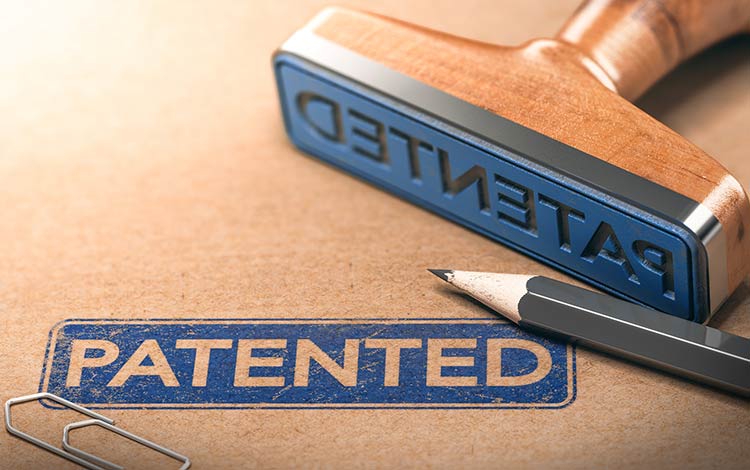Most people have heard of both trademarks and patents, but most people don’t often know the difference between the two.
Trademarks and patents share some similar features, such as both being considered intellectual property. With both of them, the exclusive rights of ownership and use are tied to whoever registers them first. But beyond this, trademarks and patents are quite different. Let’s find out more.

So What Is a Trademark?
A trademark is a name, symbol, or combination of both used by a company to distinguish its brand. For instance, you instantly recognize a bottle of Pepsi, because it carries the trademarked name “Pepsi,” which no other company uses.
Trademarks can also be servicemarks, which are used to identify the services rather than the products of a company. For example, a courier service might use a distinct service mark. So in the case of the United Parcel Service (UPS), which provides delivery services, the UPS logo could also be described as a servicemark.
The primary aim behind registering a trademark is to prevent other companies from infringing on the identity of your company. It stops them from manufacturing goods or services using your identifying mark. This protection lasts for an indefinite period of time, as long as the trademark is in use and properly maintained. Trademark registration is handled through the United States Patent and Trademark Office (USPTO).
Trademark laws may apply locally or internationally, depending on where you choose to register your mark. Although it is advisable to register your trademark early, there are situations where you can still get protection for an unregistered trademark. However, protecting your mark that way will be a harder process and cost you more in legal fees than simply registering your mark early on.
And What Is a Patent?
A patent, on the other hand, is not a registered mark, name, or symbol. Instead, a patent is a document that grants the ownership rights of an invention to the inventor or another party. Patents are issued for a fixed period of time, typically 20 years from the filing date, which differentiates them from trademarks.
For instance, if you invented a time machine, and you wanted to prevent others from simply copying your work, you could file for a patent, which would give you ownership rights to your invention and its design.
Patents give the patent holder several useful rights. In addition to preventing others from unlawfully making, selling, or using your invention, they also prevent people from importing the invention.
Patent laws are restricted to the boundaries of a country. So if you had a patent for a time machine in the U.S., and someone else built a similar machine in Cuba or Mexico, you would have no power to forbid the production or sale of the machine in those territories.
The U.S. Patent and Trademark Office issues patents in various categories, including design patents, plant patents, and utility patents. Utility patents are the most common kind because they cover a wider range of inventions. As the name suggests, design patents give you the rights to the ornamental design of a functional object. Finally, plant patents are issued to people who discover new asexually reproduced plants and hybrids.
Working with a patent attorney can help you understand the difference between patent and trademark laws, especially if your invention is in a tangible form like a new machine or process.
Registering Patents and Trademarks
The USPTO is responsible for issuing the ownership rights of patents and trademarks. The registration process for each, while similar in some aspects, varies significantly in terms of requirements and documentation. Once issued, a new patent has a term of 20 years. It typically runs from the date the application was filed. However, there are cases where the term may be pushed back to the date of an earlier application.
In order to register a trademark or patent, it has to be distinct. The USPTO requires that patents be novel — that is, the invention must be uniquely different from previous inventions. Patented inventions cannot simply be improvements on older designs. They must have non-obvious innovations that add significant development to the way the design is applied.
In the same vein, trademarks are required to be distinct. You cannot have two companies sharing similar or identical marks if they are in the same field. For instance, it would be odd if you had two beverage companies called “Pepsi Cola” and “Pepsy Cola.
Because of this, companies are encouraged to do an advanced search of the trademarked names already in use before making a decision on what name they plan to use. Working with a trademark attorney is an effective way to ensure a distinct trademark and to navigate the complexities of trademark law.
Working with Patents and Trademarks
Patents and trademarks play prominently in the business world. It is not unusual for a company to hold both patents and trademarks. Here’s how it would work in practice.
Suppose you did come up with a time machine, and you patented your invention under the name “Time FuturePast.” If you decided to open a company to sell the machines, and you opted to market your product under the same name, you could trademark the name “Time FuturePast.” In this case, you would own the trademark rights to the name “Time FuturePast” as well as the patent rights to the design of the machine. That would give you both patent protection over someone using the mechanics of the machine, as well as trademark protection over the name/branding.
Don’t Waste Any Time
Bottom line, patents are issued for inventions, and trademarks are issued for company brands. An important point to note is that both types of intellectual property protections are issued on a first-come, first-serve basis. Your ownership isn’t determined by when you created your trademark, but when you applied for the registration. (This applies to the third type of IP safeguarding, copyright protection, as well. Copyrights protect original works like stories and music. You can read more on copyright law here.)
If you created a company brand three years ago but failed to register it, and someone else created a similar brand last week and immediately applied for a trademark, the newer brand would get official recognition over yours.
The same is true with patents. The first person to file for a patent will own the rights to the invention, regardless of how early others might have developed their products. So if you do have the design for a time machine, now would be a good time to patent it.
If you need help with either registering a trademark, please get in touch with our office and we’ll gladly help you.

